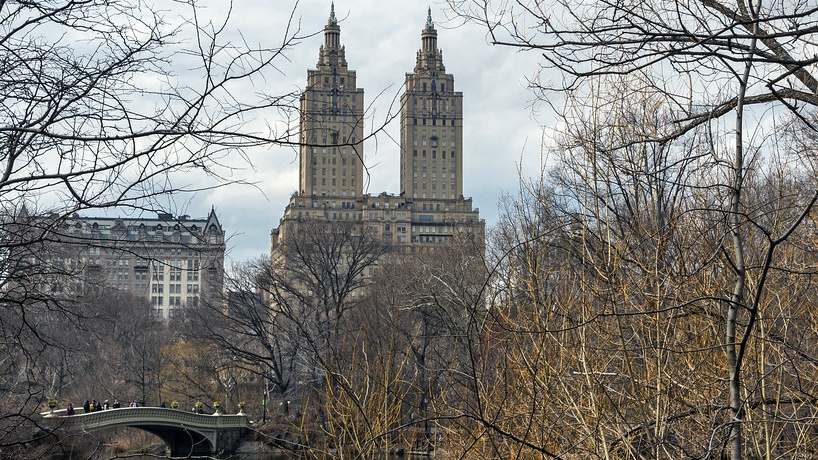New York City has opened up a call for artists to create a new statue in Central Park that will commemorate the abolitionist Lyons Family and Seneca Village.
Seneca Village was a Black community that thrived in the area before it was destroyed to make way for the park in 1857.
In early October, New York City Mayor Bill de Blasio announced the new monument as part of a broader effort to diversify the city's statues. Most of the current statues are of white men, a number of which glorify genocidal movements or mass murderers.
“What — and who — we memorialize publicly is a choice, and a statement about our values and the histories we, as a society, want to preserve,” said Elizabeth Alexander, president of the Andrew Mellon Foundation which is helping to fund the statue.
“The Central Park monument to the remarkable Lyons family—early property owners in Seneca Village, the state’s first free Black community; business owners who operated an Underground Railroad stop; educators and advocates for the rights of women—will quite literally alter the representational landscape in the heart of New York City, ensuring that a broader and truer range of the multiplicity of American stories are told. This is not just a statue that captures the past — it’s a symbol for the future that speaks to who we are as a city and a nation,” Alexander said.
The new statue will be of Albro and Mary Joseph Lyons and their daughter Maritcha, all of whom were noted Black abolitionists and philanthropists during the 1800s, when the area around Central Park was known as Seneca Village.
A planned monument announced by Mayor Bill de Blasio’s office earlier this month is set to honor a prominent African-American family that once lived in the bustling community. https://t.co/e9lP5P9eNG
— Smithsonian Magazine (@SmithsonianMag) October 30, 2019
Seneca Village has a rich history and is remembered fondly as one of the most vibrant, successful Black communities in the Northeast.
The area was first started in 1825 when two landowners divided up their plots and sold them. Many of the city's Black residents bought plots and built two-story houses, including the Lyons. Within a few years the area, which is located in what is now the Upper West Side, became populated by Black city workers as well as a few German and Irish immigrants.
By the 1850s, the village had 225 residents, many of them owning their land or homes outright. The neighborhood was self-sufficient through farming and fishing in the Hudson River, had a number of schools and was considered environmentally cleaner than any other section of the city at the time.
"For African-Americans, Seneca Village offered the opportunity to live in an autonomous community far from the densely populated downtown. Despite New York State’s abolishment of slavery in 1827, discrimination was still prevalent throughout New York City, and severely limited the lives of African-Americans. Seneca Village’s remote location likely provided a refuge from this climate. It also would have provided an escape from the unhealthy and crowded conditions of the City, and access to more space both inside and outside the home," wrote Jessica Sain-Baird of the Central Park Conservancy.
The city decided to destroy the community fully in the late 1850s to make way for Central Park after white residents had burned down part of it, including the Lyons' home, during Civil War draft riots. Although landowners were paid, historical reports suggest most people felt that they were underpaid for the land and given no other options.
Activists have criticized the city because they plan to place the monument on 106th Street, about 20 blocks away from where historians believe Seneca Village actually existed. The mayor and his wife are receiving criticism in their desire to rectify the city's rash of racist statures by rushing the process without consulting with historians or city council, enraging local activists who want the monuments to be accurate and vetted properly.
The mayor and other groups involved defended the decision to place it away from the original area, saying the monument was about both Seneca Village and the Lyons Family.
In a statement, the Ford Foundation, The JPB Foundation, the Andrew W. Mellon Foundation and the Laurie M. Tisch Illumination Fund said they were spending a total of $1.15 million. All three foundations lauded the effort and said it was long overdue.
“The Schomburg Center for Research in Black Culture is thrilled that the Lyons family is being honored in this way. The Lyons family is significant for their endeavors to not only make good lives for themselves, but also for their dedication to ensuring the freedom and education of those that they helped shuttle to freedom via the Underground Railroad. We often traverse towns and cities unaware of their full histories, let alone the battles that took place," said Michelle Commander, associate director and curator of the Schomburg Center for Research in Black Culture’s Lapidus Center.
"The Schomburg Center is honored to hold the family's archives in our collection and believe this monument is a positive step towards sustaining public and scholarly interest in slavery and abolition in New York, the Lyons family, Seneca Village, and other early Black communities in the city," Commander added.
